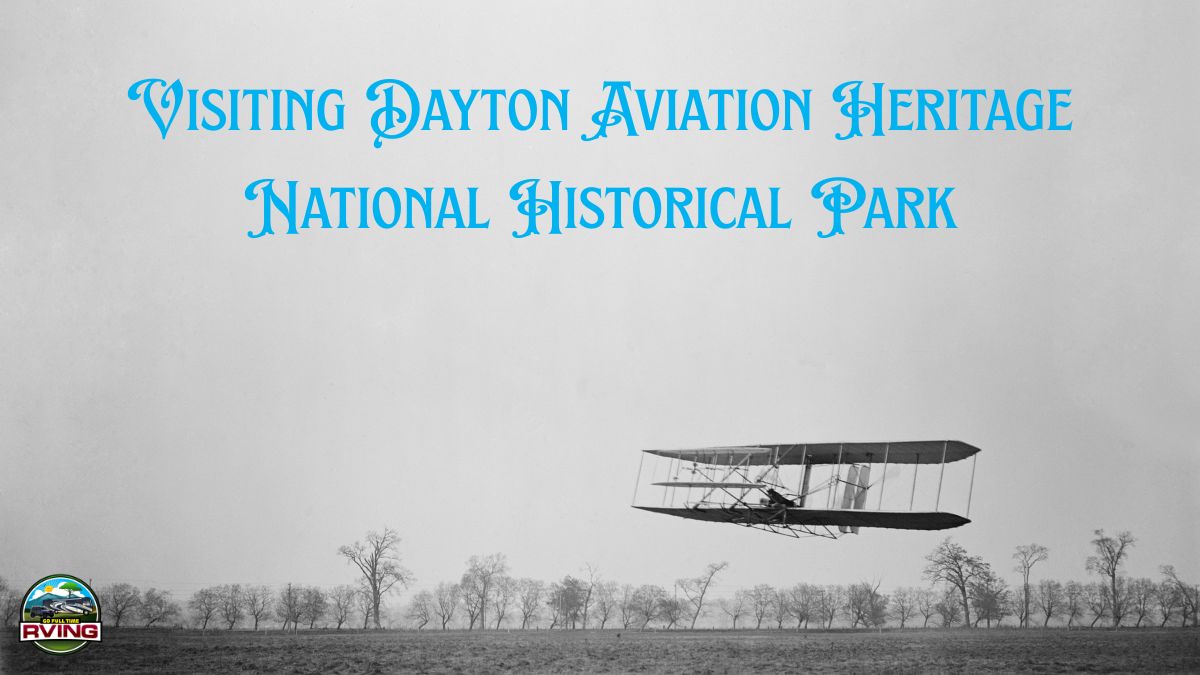If you’re a fan of aviation, history, or hidden travel gems, Dayton Aviation Heritage National Historical Park in Dayton, Ohio deserves a spot on your itinerary. This unique National Park Service site isn’t about scenic overlooks or long hiking trails—it’s about stepping into the birthplace of flight and celebrating the people who changed the course of history.
Here you’ll walk the same streets as the Wright brothers, visit their bicycle shop, stand in the tall grass where they perfected flying, and tour the home of Paul Laurence Dunbar, one of America’s most influential Black poets. Dayton’s story is about creativity, persistence, and innovation—making this park a must-visit for RVers, road-trippers, and anyone who loves history.
- What to See and Do at Dayton Aviation Heritage National Historical Park
- The Wright Cycle Company Complex – Innovation on Two Wheels
- Huffman Prairie Flying Field – Where Flight Became Practical
- Tips for Visiting Dayton Aviation Heritage National Historical Park
- Photography Notes
- Paul Laurence Dunbar House
- Why This Park Matters
- Know Before You Go
- Carillon Historical Park – Dayton’s Open-Air Storybook
- Final Thoughts
This post contains affiliate links. As a participant in Amazon Associates and various affiliate programs, we are compensated when qualifying purchases are made through our referral links at no additional cost to you. Full Disclosure
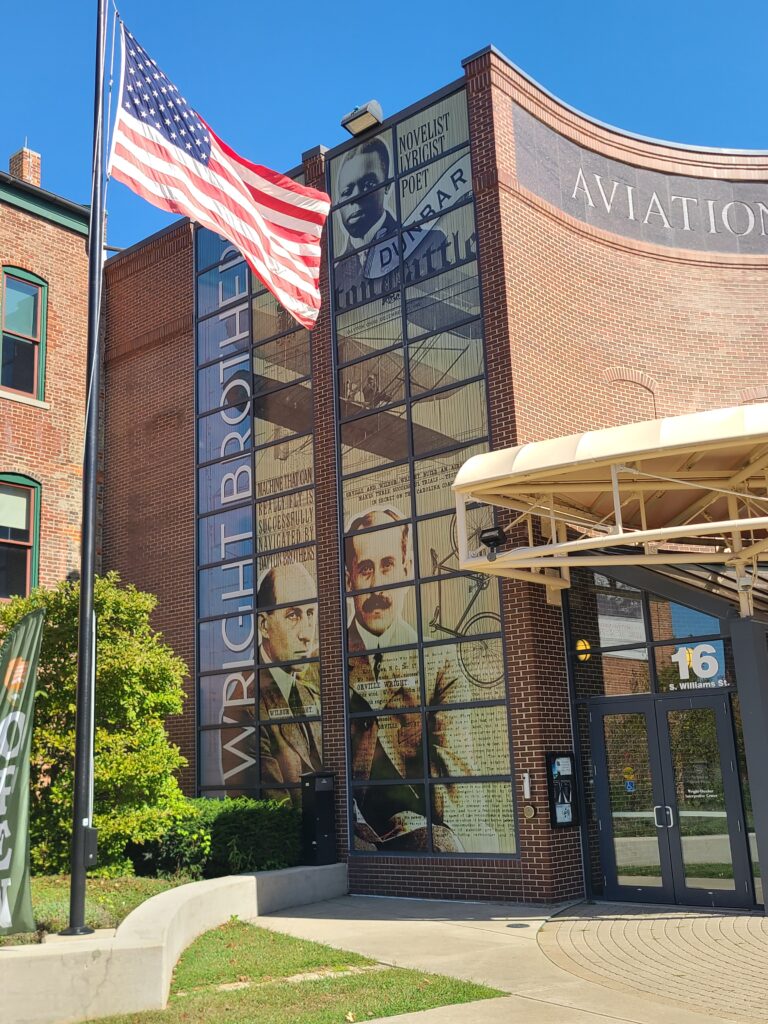
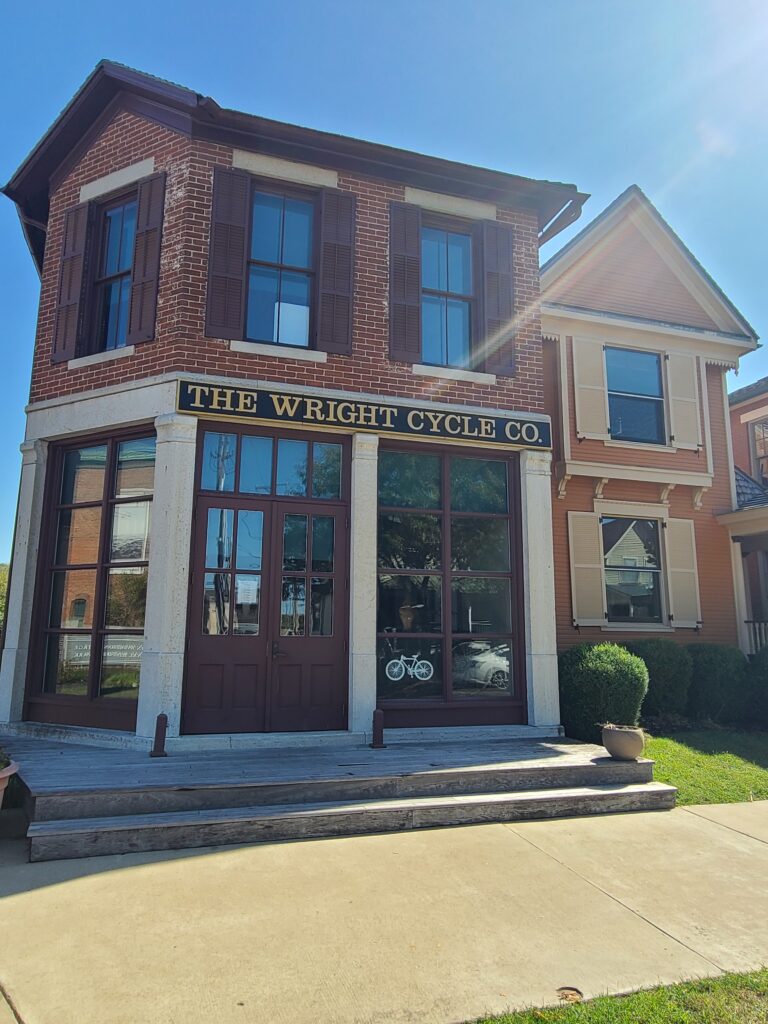
What to See and Do at Dayton Aviation Heritage National Historical Park
Wright-Dunbar Interpretive Center – Where It All Began
Your visit starts at the Wright-Dunbar Interpretive Center, located in the historic Wright brothers’ printing shop. Exhibits here explore their newspaper days, bicycle business, and early flight experiments. Don’t miss the short documentary film—it’s the best way to connect the dots between Dayton’s culture and the brothers’ journey from bicycles to airplanes.
This center also highlights Paul Laurence Dunbar, who grew up nearby and became one of the nation’s first acclaimed African American poets. Together, their stories weave a picture of a Dayton neighborhood brimming with creativity at the turn of the 20th century.
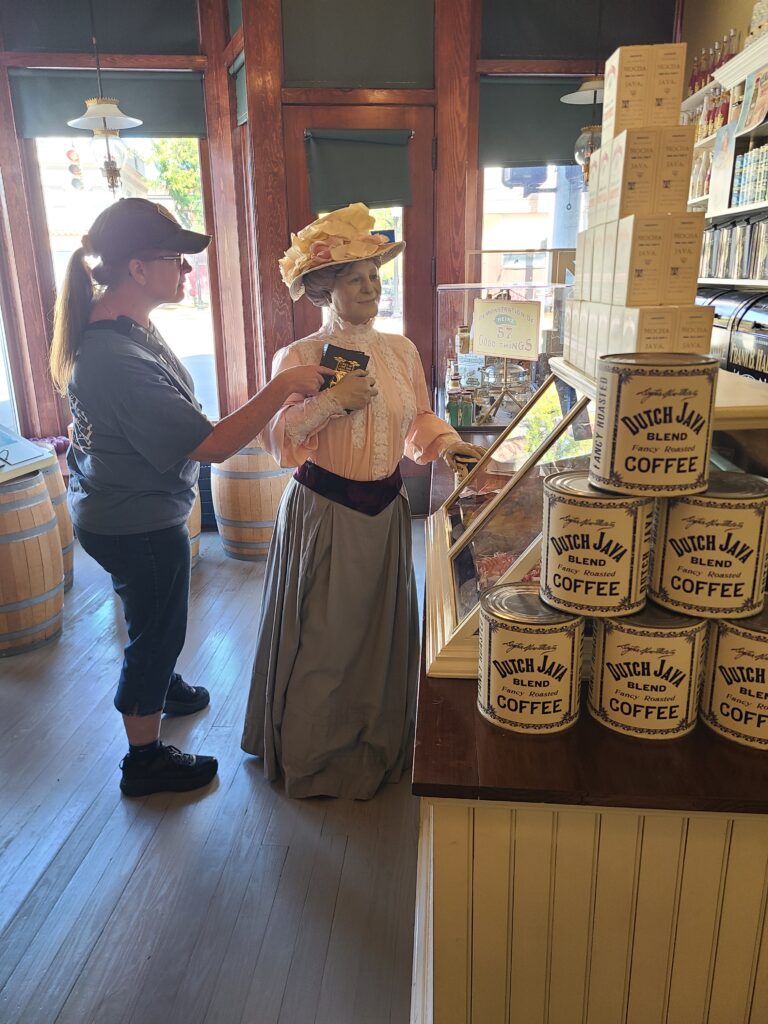
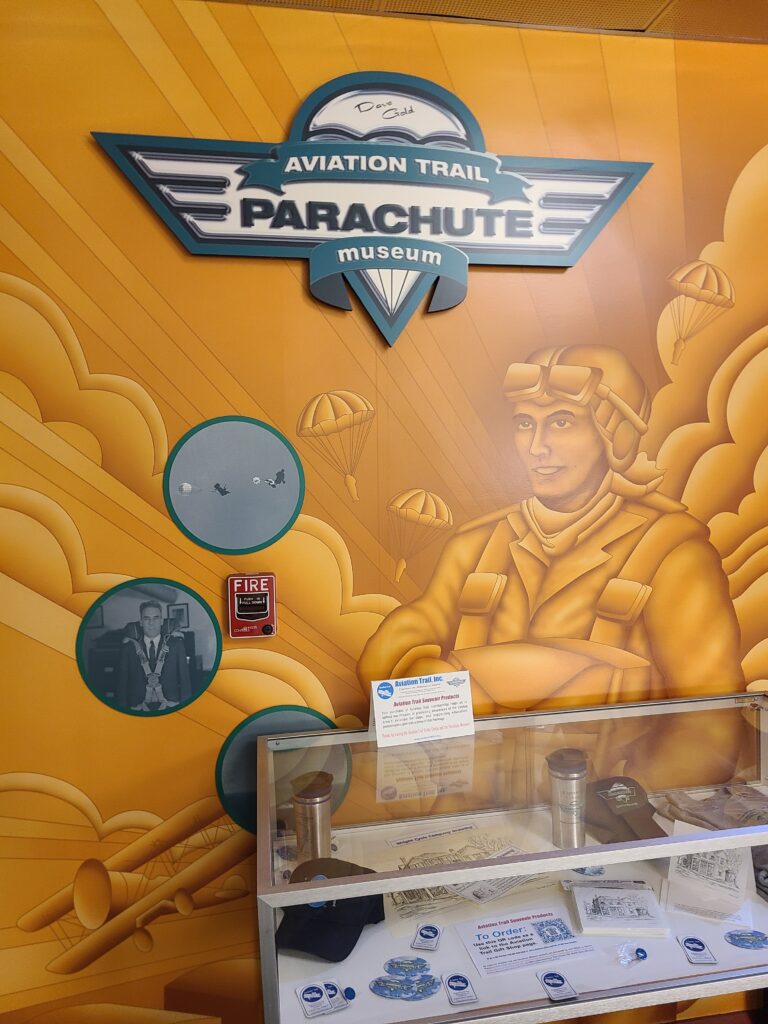
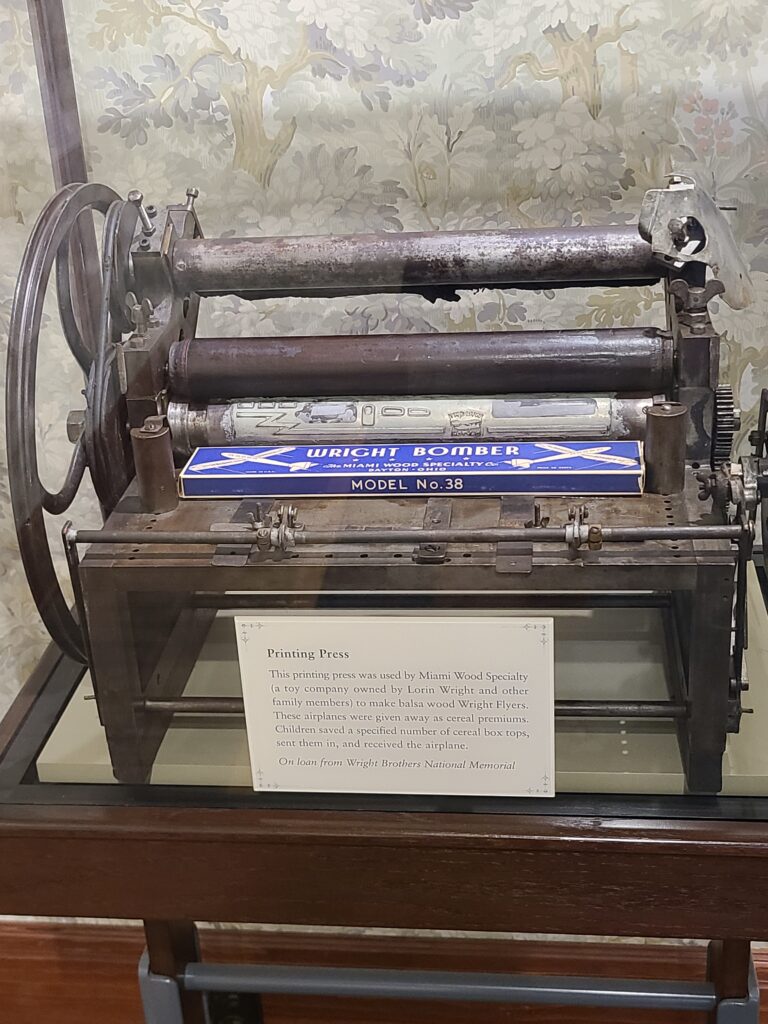
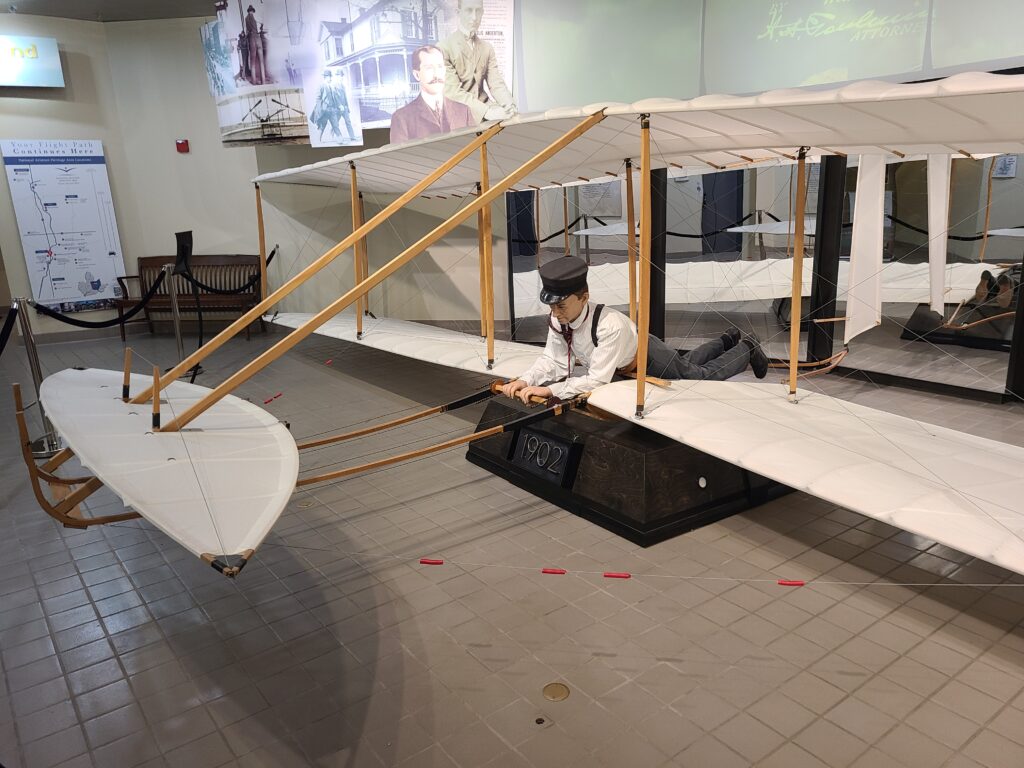
The Wright Cycle Company Complex – Innovation on Two Wheels
When you think of aviation history, a bicycle shop might not be the first place that comes to mind. But step into the Wright Cycle Company Complex in Dayton, Ohio, and you’ll quickly realize this modest brick building was the incubator for some of the most revolutionary ideas in human history.
From 1895 to 1897, Wilbur and Orville Wright ran their bicycle repair and sales business here. They fixed flat tires, adjusted chains, and sold new models to Dayton locals. But beyond just keeping wheels turning, this shop became their workshop, their laboratory, and ultimately the launchpad for aviation.
Why a Bicycle Shop Mattered for Flight
The Wright brothers didn’t just make money here—they honed their engineering skills. Repairing bicycles taught them about balance, weight distribution, and control mechanisms. They experimented with gears, bearings, and lightweight frames—concepts that translated directly into the design of their gliders and, eventually, their first powered airplanes.
What makes the story so compelling is its simplicity. This wasn’t a high-tech lab filled with resources. It was a neighborhood shop with basic tools, wooden benches, and determination. Yet from this unassuming space, two brothers developed the mechanical understanding that made controlled, powered flight possible.
What to See Inside the Wright Cycle Company
The National Park Service has carefully preserved and restored the interior of the shop to reflect its late-1800s appearance. Inside, you’ll find:
- Authentic workbenches and tools – laid out as if the brothers had just stepped away from a project.
- Bicycle parts and displays – showing the types of models they sold and repaired.
- Interpretive exhibits – explaining how skills learned here carried over into aviation experiments.
- Historic neighborhood context – highlighting how Dayton’s industrious spirit influenced innovation.
As you walk through the narrow rooms, it’s hard not to imagine Wilbur and Orville huddled over their benches, sketching designs and tinkering with prototypes that would change the course of history.
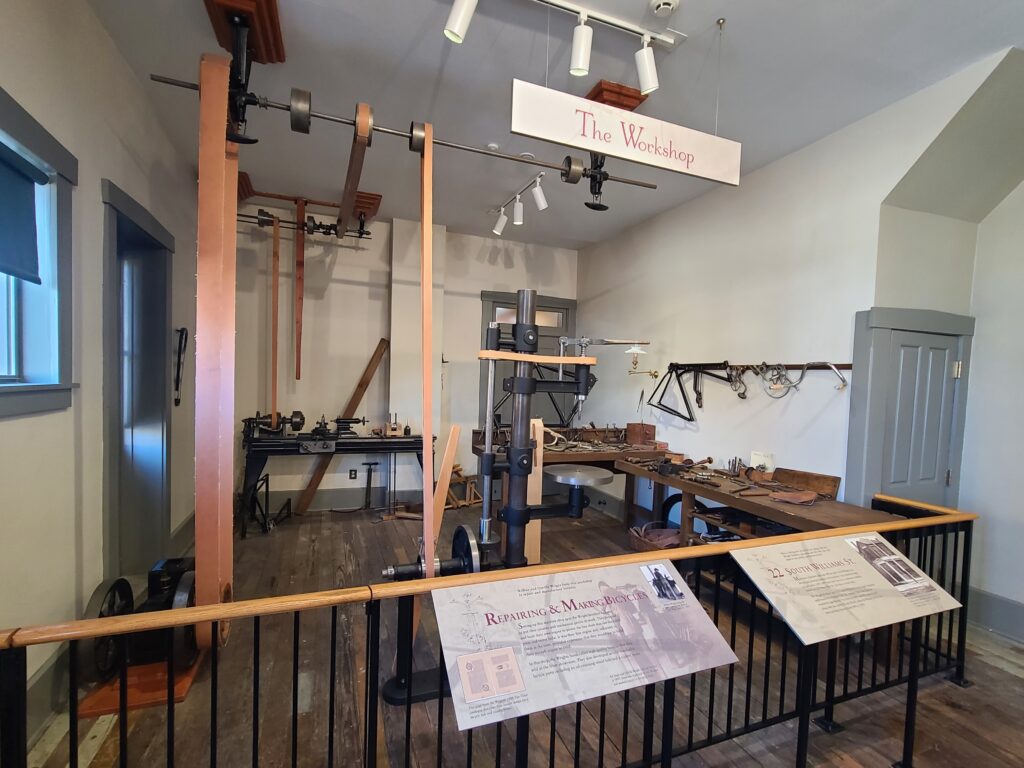
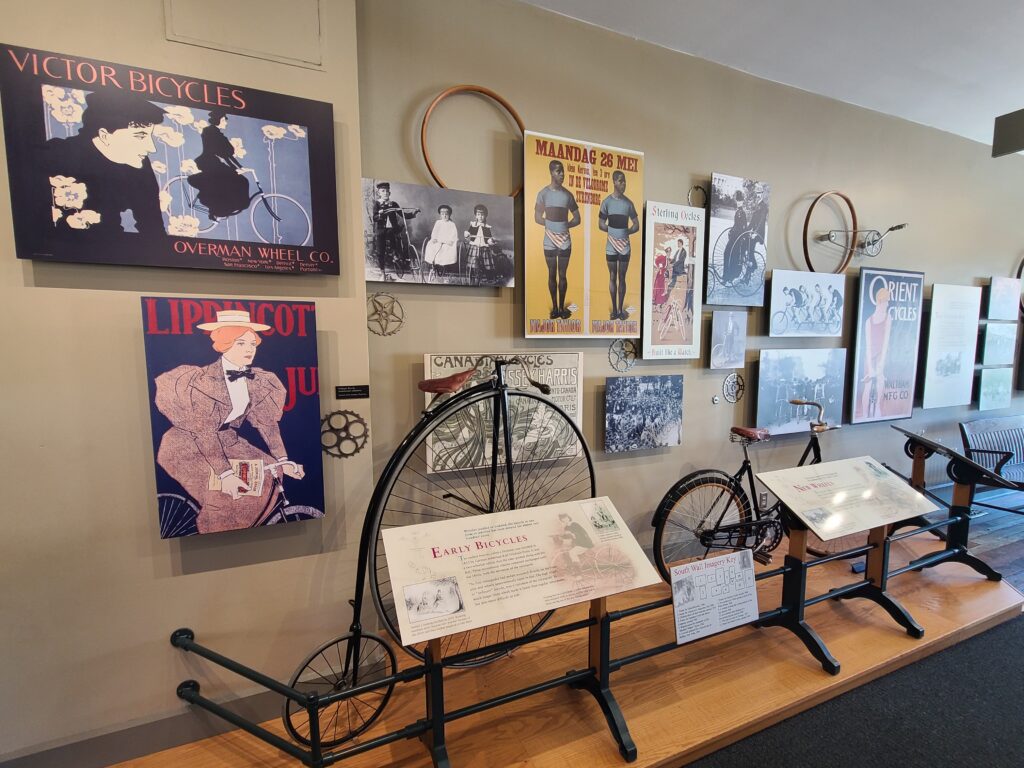
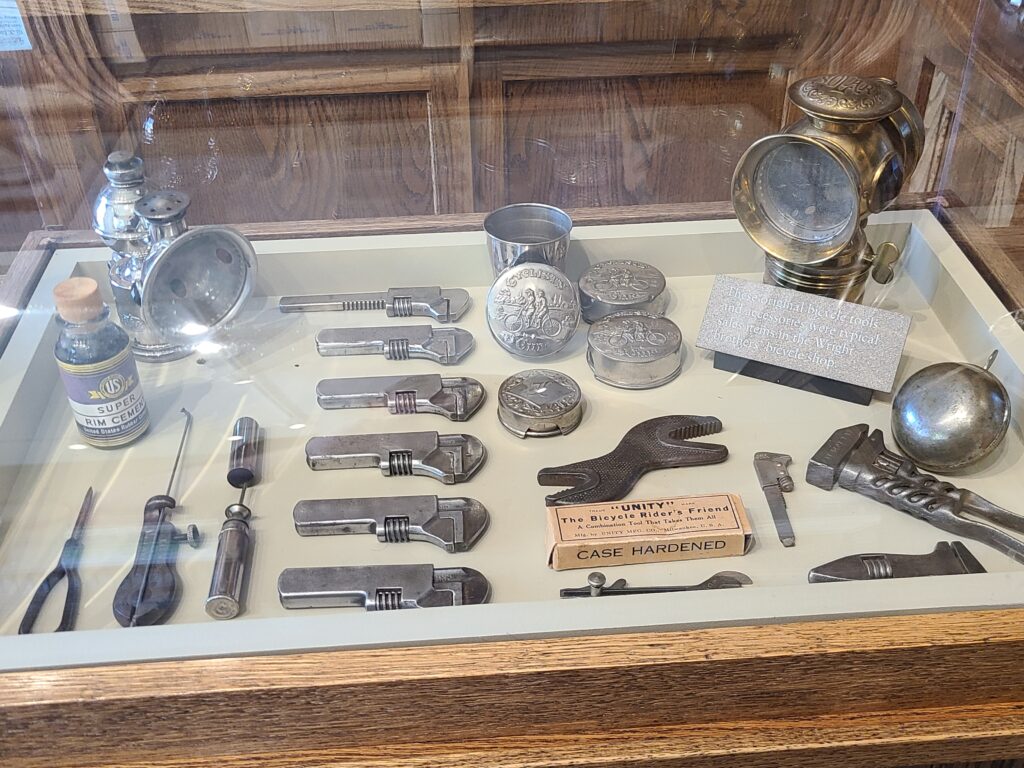
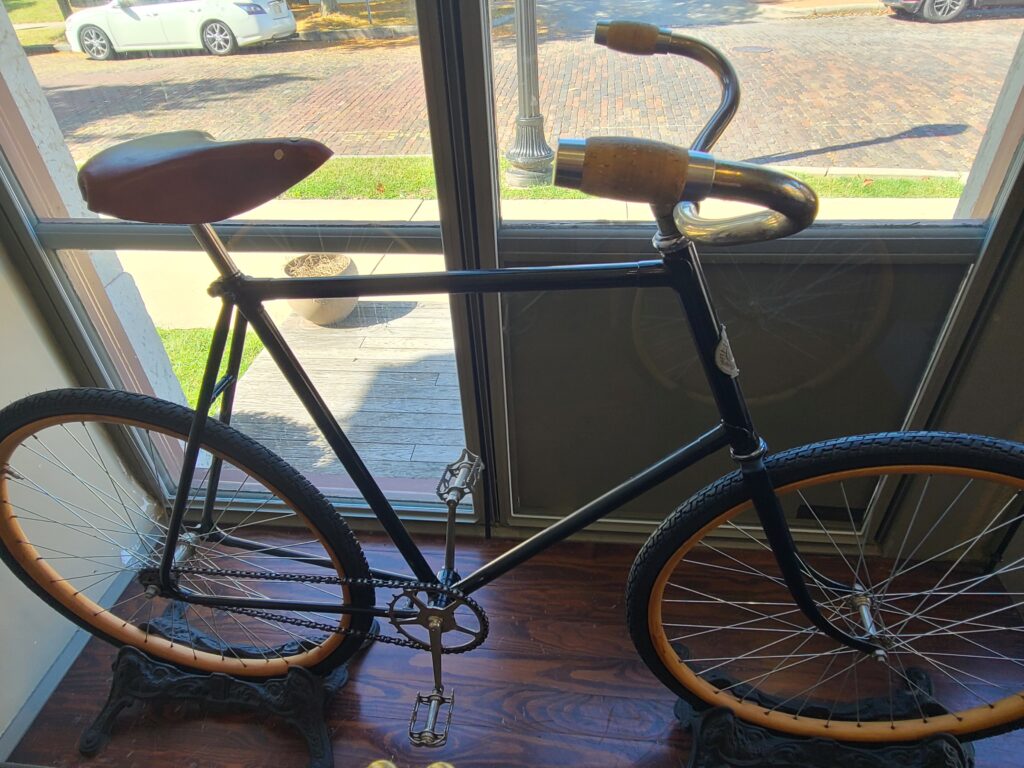
Huffman Prairie Flying Field – Where Flight Became Practical
Most people know Kitty Hawk as the site of the Wright brothers’ first powered flight. But Huffman Prairie Flying Field, just outside Dayton, is where they truly mastered aviation.
From 1904–1905, they tested, crashed, repaired, and perfected their designs here. The Wright Flyer II and Wright Flyer III were born on this grassy field—turning flight from a stunt into a practical reality.
What you’ll find today:
- A replica hangar and catapult system used to launch their planes.
- Interpretive signage detailing each stage of their progress.
- The Huffman Prairie Flying Field Interpretive Center, with films, artifacts, and historical context.
For aviation enthusiasts, this is sacred ground.
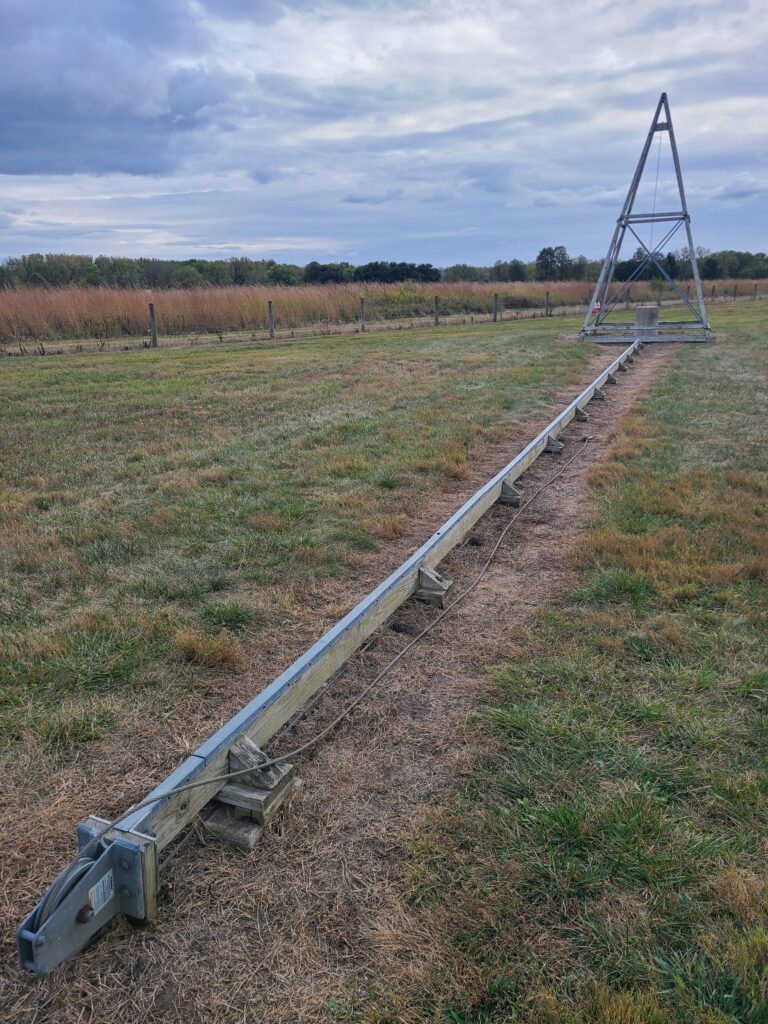
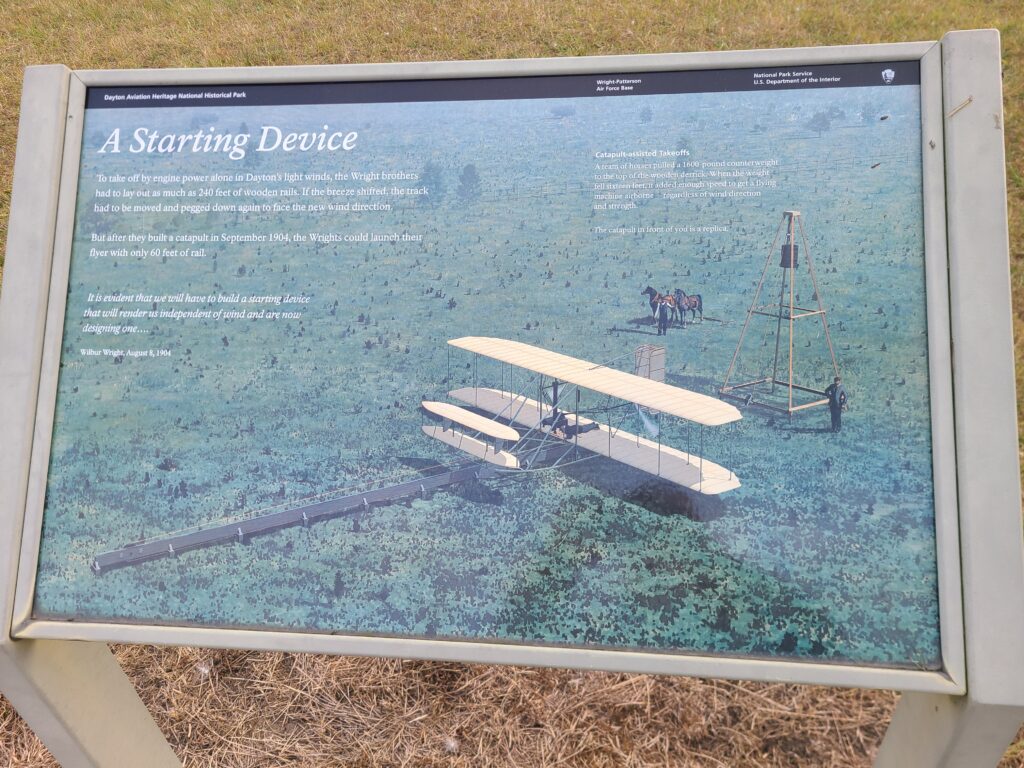
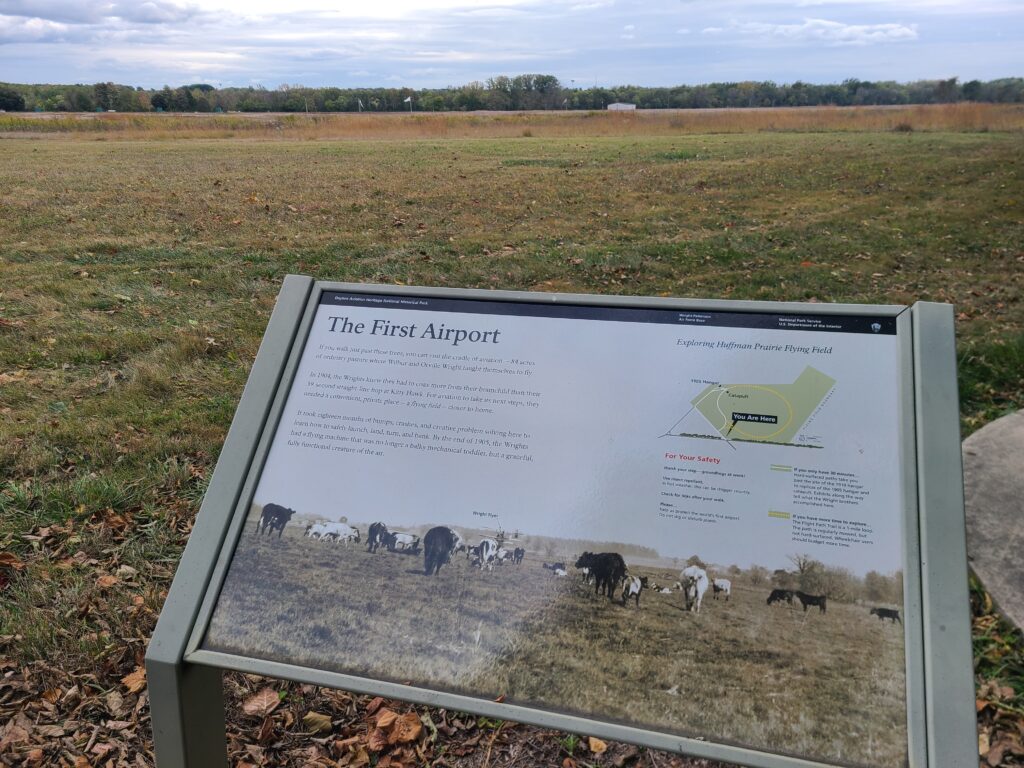
My favorite part of visiting this site as an aviation buff is that, if you’re lucky enough to be there on a breezy afternoon, it’s not hard to close your eyes and imagine the sound of early propellers slicing through the wind as one of the Wright Flyers lifts off the prairie.
Tips for Visiting Dayton Aviation Heritage National Historical Park
- Admission: Free at all sites.
- Best Time to Visit: Spring through fall for mild weather and blooming wildflowers.
- Getting There: Huffman Prairie is located on Wright-Patterson Air Force Base. Enter through Gate 16A with a valid ID—check current hours before visiting.
- Be Prepared: Many sites are outdoors with little shade. Pack water, sunscreen, and comfortable shoes.
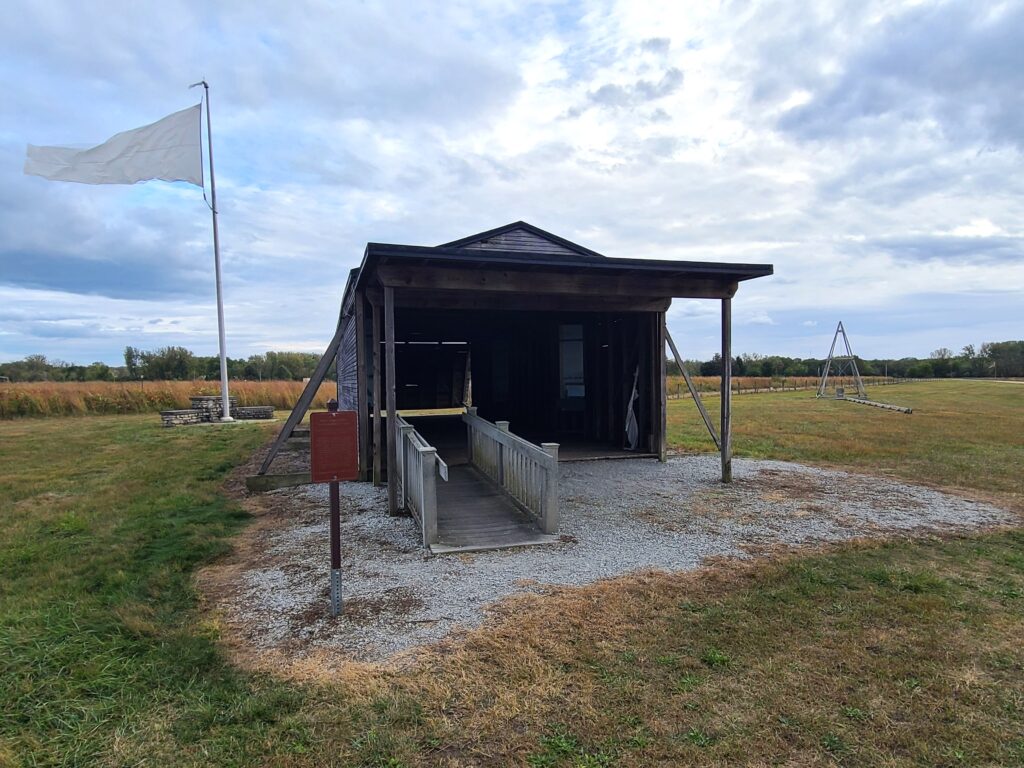
Photography Notes
- Wright Cycle Company: Great for detailed shots of workbenches and preserved tools.
- Huffman Prairie: Best photographed with a wide-angle lens at sunrise or golden hour.
- Carillon Historical Park: Capture the 1905 Wright Flyer III with soft indoor lighting for historical storytelling shots.
Paul Laurence Dunbar House
A short distance away, you can tour the Paul Laurence Dunbar House, where one of America’s most celebrated Black poets lived. Dunbar’s friendship with the Wright brothers adds another layer of depth to Dayton’s story, blending innovation with artistry.
Why This Park Matters
Dayton Aviation Heritage National Historical Park isn’t just about airplanes. It’s about American innovation, creativity, and resilience. The Wright brothers’ determination and Paul Laurence Dunbar’s literary voice show how one city quietly shaped the modern age.
For full-time RVers and road-trippers, this stop is more than just sightseeing—it’s inspiration.

Know Before You Go
- Location: Multiple sites throughout Dayton, OH
- Admission: Free
- Best Time to Visit: Spring through fall for mild weather and special events
- Official Website: NPS Dayton Aviation Heritage
If you’re road-tripping through Ohio or exploring the Midwest, don’t pass this one up. It’s not just a visit—it’s a spark of inspiration.
Carillon Historical Park – Dayton’s Open-Air Storybook
While not part of the National Historical Park, Carillon Historical Park is a must-see nearby. Spanning 65 acres, it showcases over 30 historic buildings and more than three million artifacts—including the 1905 Wright Flyer III, the world’s first practical airplane.
It’s a hands-on experience that tells Dayton’s story beyond aviation, highlighting local inventions like the cash register and the electric starter.
The Cash Register Legacy at Carillon Historical Park
One of the highlights of Carillon Historical Park is its fascinating collection of early cash registers. Dayton was the birthplace of the National Cash Register Company (NCR), founded in 1884, and the company went on to transform not only business transactions but also the industrial landscape of the city.
Inside the park, you’ll find a dazzling display of ornate brass cash registers—many with intricate designs, polished wood, and mechanical precision that feels almost artistic compared to today’s digital checkout counters. These weren’t just tools for commerce; they were status symbols for businesses, often decorated with flourishes to match the prestige of a shop or restaurant.
The exhibits do a great job of showing how John H. Patterson, NCR’s founder, revolutionized both technology and corporate culture. He introduced sales training, welfare programs for employees, and community involvement—concepts that shaped modern business practices as much as his machines shaped commerce.
For history buffs, this is an eye-opening reminder that Dayton’s innovations went far beyond aviation. The same city that gave the world powered flight also gave us the cash register, a device that fundamentally changed how businesses operated across the globe.
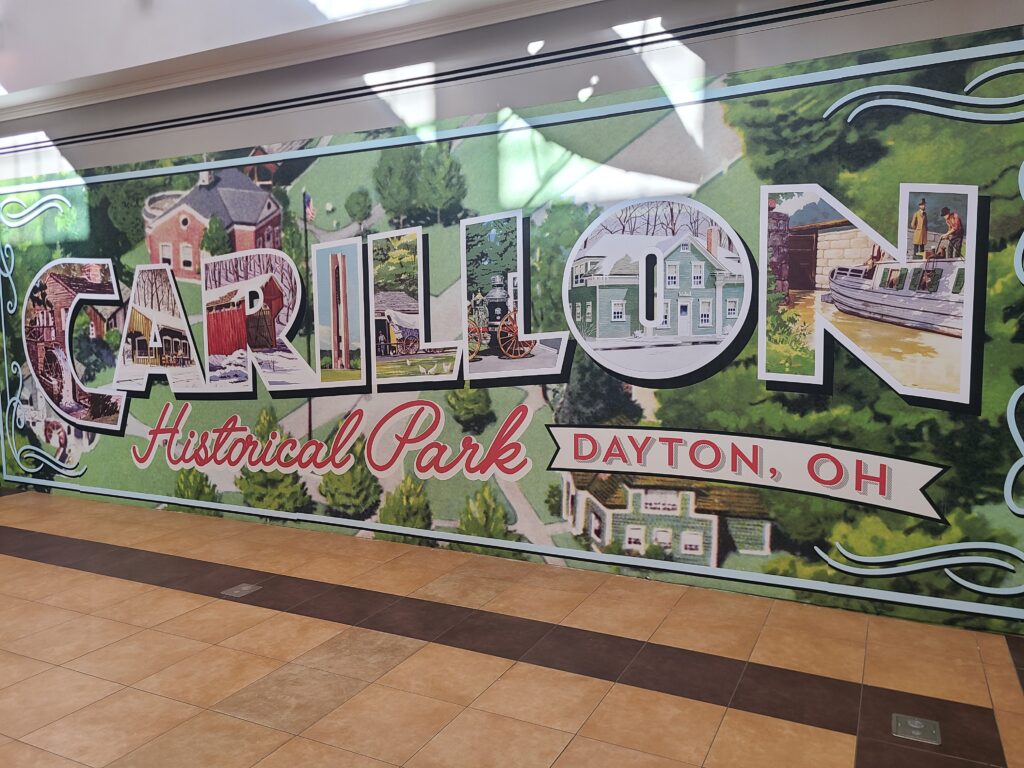
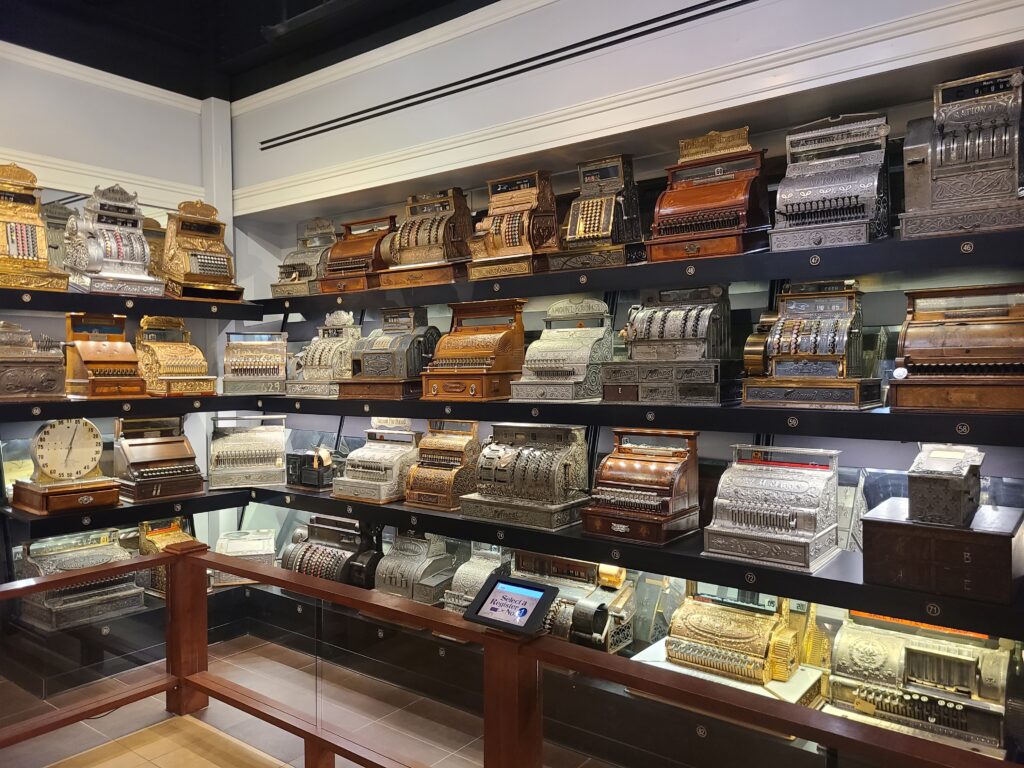

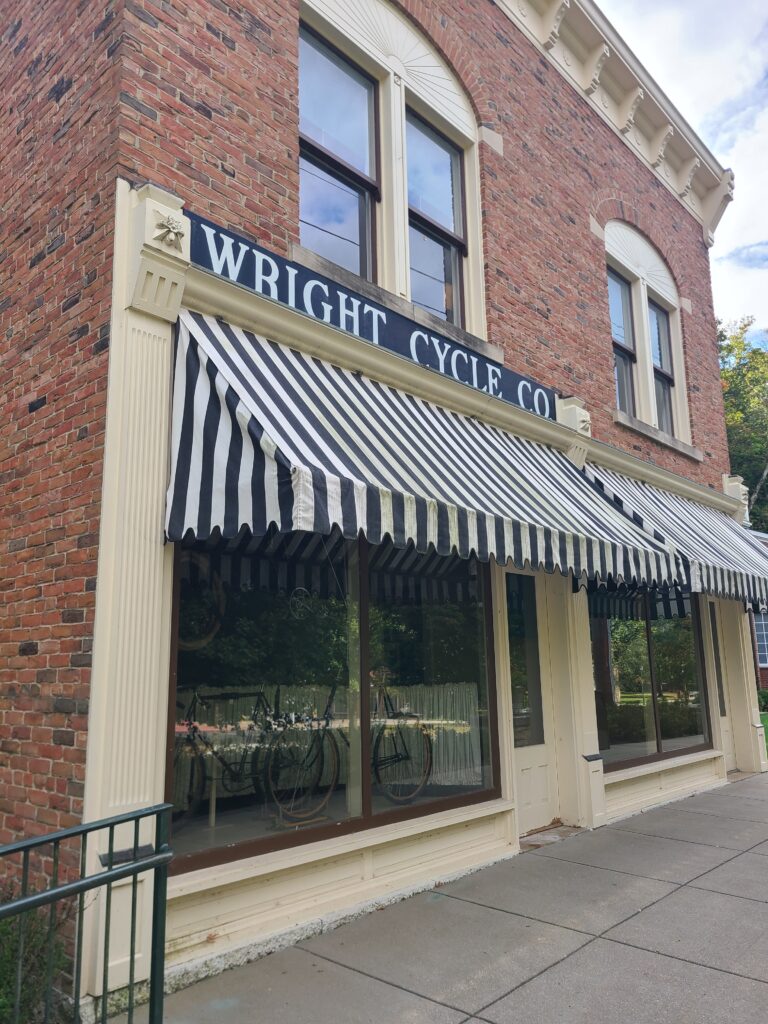
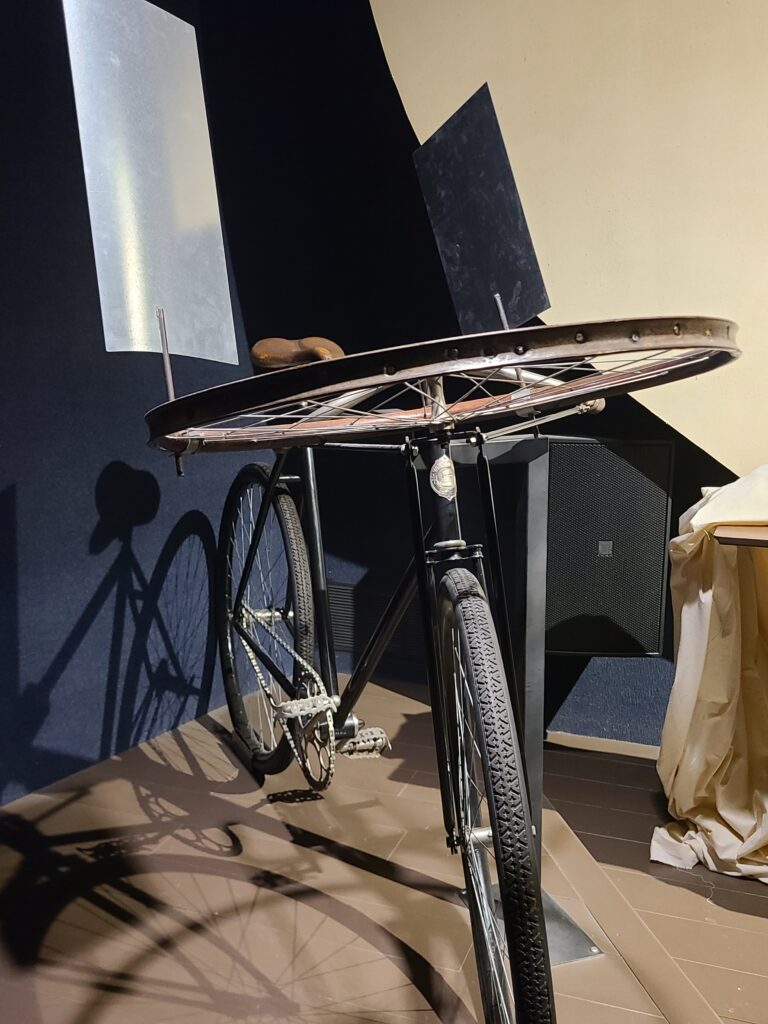
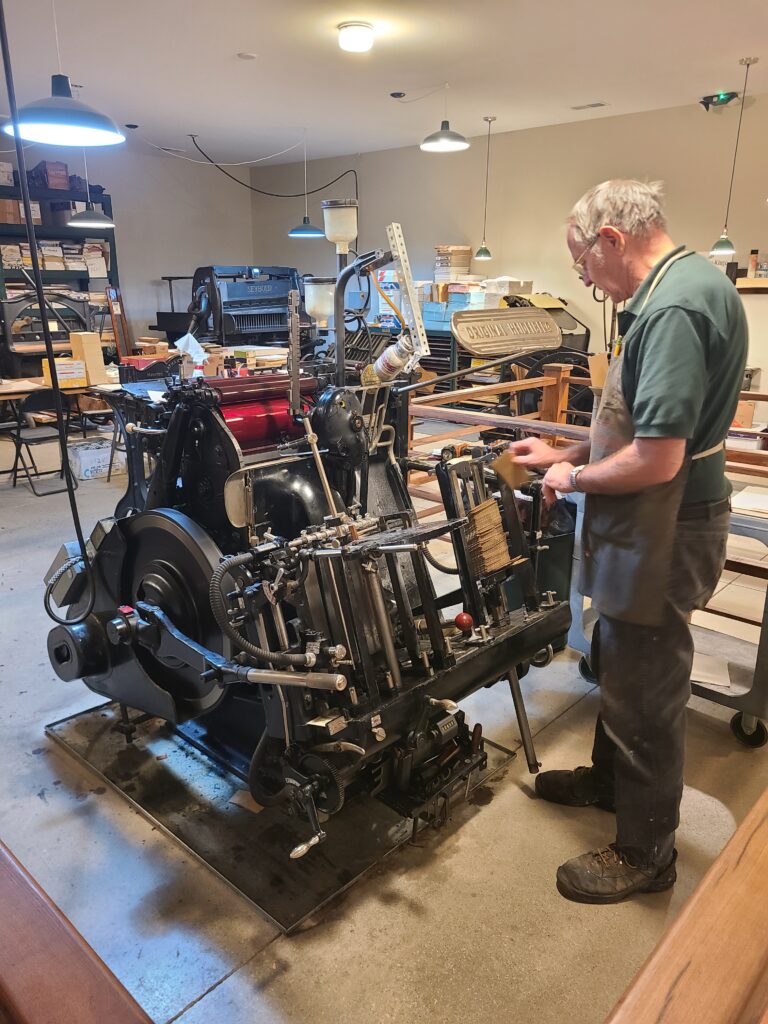

Final Thoughts
Dayton, Ohio, might not be the first place you think of for great leaps in history, but it should be. At Dayton Aviation Heritage National Historical Park, you’ll stand in the spaces where bicycles became airplanes, where poetry gave a voice to a generation, and where dreams lifted off the ground.
Whether you’re exploring in an RV, taking a Midwest road trip, or seeking inspiration, Dayton delivers a story that will stick with you long after your visit.
So if you’re rolling through Ohio—don’t just pass through. Stop, explore, and feel the lift of history.
What interesting places can you recommend?
We’re always on the lookout for unique, out-of-the-way experiences to add to our list.
Thanks for taking the time to read our article!
If you have any questions or comments, we’d love to hear from you in the section below.
If you’re looking to build your own home-based business like we have with this webpage, check out Wealthy Affiliate.
Wealthy Affiliate is an all-in-one platform that you can build your whole affiliate marketing business on. It combines training, software, and website hosting into one. This makes the whole process of starting an online business from scratch much easier, especially if you’re new to building a website.


